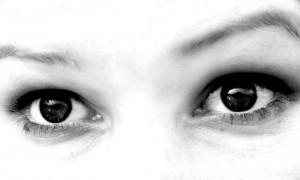 Researchers at the consumer genetics company 23andMe in Mountain View, California found 20 new associations with myopia or nearsightedness from data provided by their customers. The team led by Nicholas Eriksson, the company’s principal scientist, published its findings online in a recent issue of the journal PLoS Genetics.
Researchers at the consumer genetics company 23andMe in Mountain View, California found 20 new associations with myopia or nearsightedness from data provided by their customers. The team led by Nicholas Eriksson, the company’s principal scientist, published its findings online in a recent issue of the journal PLoS Genetics.
Nearsightedness is a common vision condition, which according to the National Eye Institute, affects some 25 percent of the U.S. population. The condition occurs when close-up objects can be seen clearly, but objects further away are blurred. Nearsightedness develops when a person’s eyes that focus images in front of, rather than on the retina. The condition be a result of eyeball becoming too long that prevents incoming light from focusing on the retina, or by an abnormal shape of the lens or cornea.
The development of nearsightedness has been attributed to a combination of environmental variables, including demanding close detail work, and hereditary factors. The 23andMe team examined genetic associations with nearsightedness in a survey of 45,771 of its customers of European ancestry, who gave prior consent to be part of these studies. The survey asked about their personal histories with vision problems, and the researchers matched the survey data to the customers’ genetic records.
The team’s analysis shows 22 genetic associations with nearsightendess, only two of which were previously known. The 20 new associations indicate a number of genetic factors are at work. Most, 16 of 20, associations are linked to variety of genes involved in development of the eyes and nerve cells, and neuronal signaling. In addition, 10 of the 20 associations show up in a sub-group of the sample numbering 8,323 who say they developed nearsightendness before the age of 10.
The findings indicate that nearsightedness may be a common condition, but the hereditary factors behind it are complex and involve multiple genetic pathways. “This study highlights the potential importance of early neuronal development in the progression of myopia,” says Eriksson, “and opens the door for additional research into the complex interactions that underlie vision development.”
Read more:
- DNA Sequencing Performed with Tiny Samples, No Library Prep
- Genetics Company Lands NIH Allergies, Asthma Research Grant
- Model Computes Genetic Test, Family History Predictive Value
- Faster Whole Genome Sequencing Developed for Infants
- 23andMe Opens Application Interface to Outside Developers
Photo: Paleontour/Flickr
* * *

 RSS - Posts
RSS - Posts
You must be logged in to post a comment.